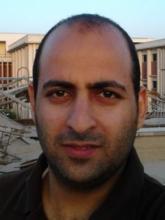Title:
Energy Engineering Using Educational Laboratory Kits
Project Description:
Mechanical / Energy engineering undergraduates from the University of Florida, USA and Aswan University, Egypt will collaborate virtually running hands-on fluid mechanics experiments conducted using physical lab kits which are identical and available at both universities. Students will build apparatuses; run experiments; collect data; analyze and discuss results; and communicate findings in written, oral, and video media. The virtual exchange’s capstone project, completed in groups with students from both universities will be to design, build, test, and demonstrate an original lab experiment drawing on in-kit items to demonstrate, measure, and quantify a fluids phenomenon.
Learning Outcomes:
- An ability to Collaborate effectively within a multidisciplinary team. An ability to communicate effectively with a range of audiences.
- An ability to think in a creative and innovative way in problem solving and design. An ability to identify, formulate, and solve complex engineering problems by applying principles of engineering, science, and mathematics.
- An ability to understand characteristics of engineering materials related to the discipline.
- An ability to search for information and engage in life-long self-learning discipline.
- An ability to apply engineering design to produce solutions that meet specified needs with consideration of public health, safety, and welfare, as well as global, cultural, social, environmental, and economic factors.
Participating Countries:
Egypt
Number of Participants:
Discipline:
Engineering
UF Course Code & Name:
EGN3353C - Fluid Mechanics (With Laboratory)
Project Duration:
15 weeks
Activity Type(s):
Student-to-Student Dialogue
Student-to-Student Project
Other
Student-to-Student Project
Other
Time allotted to each activity:
Synchronous Activities: 3 hours/week
Asynchronous Activities: 5 hours/week
Local group activities: 2 hours/week
Individual Work: 5 hours/week
Asynchronous Activities: 5 hours/week
Local group activities: 2 hours/week
Individual Work: 5 hours/week
Technology Tools:
Videoconference: Zoom
Learning Management System: Canvas
Collaborative Authoring Platforms: Google Docs
Message Boards/Video boards: Padlet, Flipgrid
Learning Management System: Canvas
Collaborative Authoring Platforms: Google Docs
Message Boards/Video boards: Padlet, Flipgrid
Sequence of Activities:
- Asynchronous Icebreaker Activity: Video Self-Introduction. Each student will produce a 60-second self-introduction video in Flipgrid where they will give their name, institution, year in school, and a statement of what they hope to gain from the course and the virtual exchange.
- Synchronous Icebreaker Activity: Informal Discussion of Fluids in daily Egyptian and US Life. Students to describe and discuss fluid mechanics applications that they encounter daily and fluids principles that make these technologies work.
- Engagement Activity: Padlet Exploration of the World’s Hydroelectric Dams. The proximity of Aswan University to the Aswan High Dam and the importance of this major piece of Egyptian infrastructure to the overall joint fluids course is a central element of the Virtual Exchange.
- Hands-On Lab Experiments: Studying Fluid Mechanics Phenomena- Activity: Students from Egypt and the US will collaborate on physical fluids experiments using identical lab kits located at both institutions.
- Final Group Project: Collaborating On New Laboratory Experiment Creation- Once students from Egypt and the US have collaborated through experiments embodied in the shared fluids laboratory kits, the culminating activity of the joint course will be student-led development of new experiments using elements and parts from the kit to elucidate different fluids phenomena.




